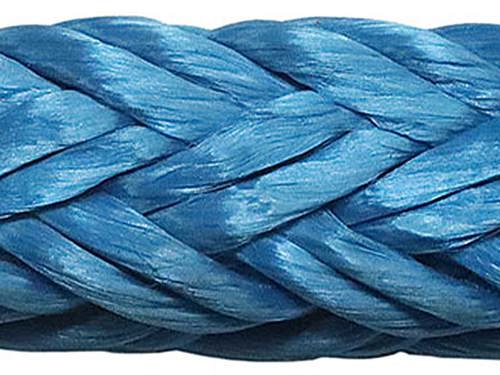What happens when an additional safety feature on your mooring lines turns out to be a major problem? That was the question facing BW Fleet Management after one dramatic incident in which seven high-modulus polyethylene (HMPE) mooring ropes failed on a single vessel during a berthing operation in Spain. Luckily, Samson Rope and Dyneema® had the answer.

Reaching breaking point
It was after this serious event that BW turned to Samson for help – but it hadn’t just been a one-off. Like many other operators in the industry, BW was dealing with continual rope failures onboard its ships, all related to certain jacketed HMPE mooring lines, which posed a serious risk to both safety and operational efficiency.
Time to fix the problem once and for all. BW enlisted the help of Samson, a worldwide leader in the development and manufacture of high-performance ropes made with the ultra-high-molecular-weight polyethylene (UHMWPE) branded as Dyneema®, to investigate why the generic HMPE ropes were breaking.
It turned out that the jackets – designed to protect the load-bearing core against abrasion, cutting, and wear – were preventing the proper inspection of this core, and hiding damage that ultimately led to line failure under load.
Based on this report, BW decided the best way to keep its vessels and crews safe was to replace every jacketed mooring line with a non-jacketed rope. A solution that appeared to offer less protection against rope failure would actually provide greater safety and operational efficiency for the fleet.
Strength plus+ more with Dyneema®
But which ropes to choose? After weighing up the options, BW opted for Samson’s own AmSteel®-Blue mooring lines, made with Dyneema® SK78 fiber. Dyneema®, the world’s strongest fiber™, is specifically engineered to withstand the long-term load-bearing requirements of extreme applications. Better yet, it shows consistent high quality while doing so, achieving its claimed strength of 35 cN/dtex batch after batch.
Ropes made with Dyneema® SK78 fiber are typically used in applications that call for lightweight strength plus abrasion resistance, bending performance, resistance to compression fatigue, and/or resistance to creep.
Take abrasion, for example: mooring a large vessel involves running the rope through fairleads and over capstans, making it a rough, tough life for a mooring rope. External abrasion eventually degrades and breaks the fibers, but ropes containing Dyneema® SK78 fiber have a proven abrasion lifetime that’s four times longer than that of generic HMPE ropes. What’s more, applying a proprietary coating to the ropes enables even higher abrasion resistance.
In the case of BW, whose primary requirements were strength plus abrasion resistance, resistance to bending fatigue, and creep resistance, AmSteel®-Blue mooring lines made with Dyneema® SK78 fiber were the clear winner. They offer better bend fatigue characteristics than other grades of HMPE, as well as a longer service life in applications where long-term static loads can lead to rope elongation – just what BW needed.


Lose the jacket, gain control
With safety and reliability the top priorities for his business, Olav Lyngstad, BW’s Head of LNG/FSRU & Supporting Departments, greatly appreciated the benefits of switching to mooring ropes made with Dyneema® SK78 fiber. “With the jacketed mooring lines, we lost control over the lines’ condition. One of the many advantages of the Samson lines is that we can visually monitor them on an ongoing basis, allowing for better decision-making when lines need to be changed out or repaired. That helps us maintain the security of our moorings.”
It certainly does: two years on – and an average of more than 1,500 service hours later – the vessels that had switched to Samson AmSteel®-Blue ropes made with Dyneema® had seen no incidents, in any port, anywhere in the world. Another success story for Dyneema® SK78 fiber!
Contact our experts
Interested in learning more about Dyneema® for your project or end-use application? Reach out to our team of experts today.
Get in touch